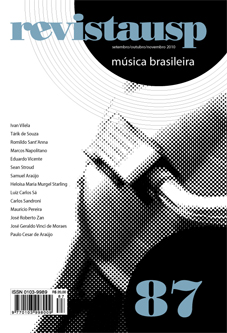Categorias raciais e gêneros musicais gravados no Rio de Janeiro dos anos 1930 e 1940
DOI:
https://doi.org/10.11606/issn.2316-9036.v0i87p134-143Keywords:
samba, blood mixing, African-Brazilian musicAbstract
The shape samba took from the end of the 1920s on came to represent the musical symbol of a certain "Brazilian culture", in which the positive valuation of the idea of blood mixing played a key role. The relationship between samba and race has been, therefore, permeated by ambiguity: the recognition of this genre as "African-Brazilian" has been subsumed because of its capacity to represent a hybrid musical Brazilianity. In the 21st century, new visions of "race issue" in Brazil have led some to suggest new approaches to the study of its relations with the samba heritage from Rio de Janeiro. Listening to less well known genres such as "macumba", "jongo" and "batuque", recorded in Rio de Janeiro in the 1930s and 1940s, helps us to discuss samba, "race", and the images of the "mestizos" in Brazilian popular music.Downloads
Download data is not yet available.
Downloads
Published
2010-11-01
Issue
Section
Dossiê
License
Copyright (c) 2023 Revista USP

This work is licensed under a Creative Commons Attribution-NonCommercial-ShareAlike 4.0 International License.
|
Pertence à revista. Uma vez publicado o artigo, os direitos passam a ser da revista, sendo proibida a reprodução e a inclusão de trechos sem a permissão do editor. |
How to Cite
SANDRONI, Carlos. Categorias raciais e gêneros musicais gravados no Rio de Janeiro dos anos 1930 e 1940 . Revista USP, São Paulo, Brasil, n. 87, p. 134–143, 2010. DOI: 10.11606/issn.2316-9036.v0i87p134-143. Disponível em: https://www.revistas.usp.br/revusp/article/view/13836.. Acesso em: 14 may. 2024.


